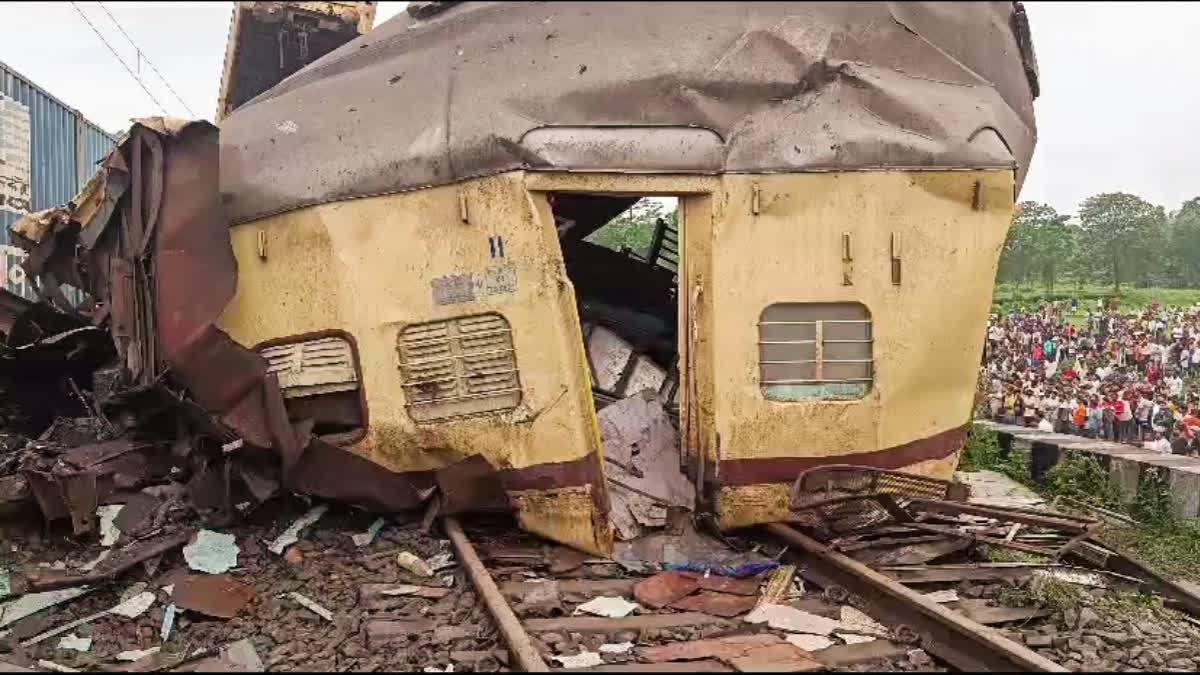New Delhi: In a tragic incident, a goods train rammed into the stationary Kanchanjunga Express from the rear on June 17 morning in West Bengal in which eleven people died. This incident might have been averted if an anti-collision system was in place.
Just after the incident, Jaya Verma Sinha, Chairperson and Chief Executive Officer, Railway Board said Kavach needs to proliferate and the Delhi-Guwahati route is in the next phase of the plan to install it. She earlier said that safety is the first priority of the railways. Kavach is being deployed in a mission mode.
Kavach
The KAVACH is an indigenously developed Automatic Train Protection (ATP) system by the Research Design and Standards Organisation (RDSO) in collaboration with Indian industry and trials facilitated by South Central Railway (SCR) to achieve the corporate objective of safety in train operations across the Indian Railways. It is a state-of-the-art electronic system of Safety Integrity Level-4 standards. This system stops the train automatically, if another train approaches the same track.
Features of KAVACH
Prevention of Signal Passing at Danger (SPAD), Continuous update of movement authority with display of signal aspects in Driver Machine Interface (DMI) / Loco Pilot operation cum Indication Panel (LPOCIP), automatic braking for prevention of over-speeding, auto whistling while approaching Level Crossing Gates, prevention of collision between two Locomotives equipped with functional KAVACH, SoS messages during emergency situations, and centralised live monitoring of train movements through Network Monitor System.
KAVACH deployment strategy
Around 96 per cent of railway traffic is carried on the Indian Railway High-Density Network and Highly Used Network routes. To transport this traffic safely, KAVACH works are being taken up in a focused manner.
Installation of Kavach
The process is challenging to install Kavach in the existing railway network without blocking or disrupting train services.
Infrastructure Requirements
The progress related to Kavach is as under laying of optical fiber cable, installation of telecom towers, provision of equipment at stations, provision of equipment in Loco and installation of track-side equipment in route.
How it works
Kavach aids the loco pilot in trains running within specified speed limits by automatic application of breaks in case Loco Pilot fails to do so and also helps the train safely run during inclement weather.
Kavach Certified
Kavach system is certified for Safety Integrity Level-4. The certification by an Independent Safety Assessor (ISA) is conducted at the time of commissioning, once the whole section is fully equipped and tested, the Railway Minister Ashwini Vaishnaw informed in the Rajya Sabha.
First successful trial
The successful trial of Kavach was conducted between Gullaguda-Chitgidda Railway Station on the Lingampalli-Vikarabad section in the Secunderabad division of the South Central Railway. During the trial, a head-on-collision situation was created as both the locomotives were moving towards each other. The Kavach system initiated the automatic braking system and halted the locomotives 380 meters apart.
Also, crossing the red signal was tested; however, the locomotive did not cross the red signal as Kavach necessitated the application of brakes automatically. The automatic whistle sound was loud and clear when the gate signal approached. The crew did not manually touch the sound and braking system during the trial. The speed restriction of 30 kmph was tested when the locomotive was run on a loop line. 'Kavach' automatically reduced the speed to 30 kmph from 60 kmph as the locomotive entered the loop line.
Project status
Kavach has been deployed on 1465 route km and 139 locomotives, including Electric Multiple Unit rakes, on the South Central Railway. Tenders have been awarded for the Delhi-Mumbai and Delhi-Howrah corridors (approximately 3000 Route km). The progress related to Kavach is as under - the laying of optical fiber cable 3040 km, Installation of telecom towers 269 numbers, provision of equipment at stations 186, provision of equipment in Loco 170 and installation of track-side equipment 827 route km, the Railway Minister had said in the Upper House of the Parliament.



